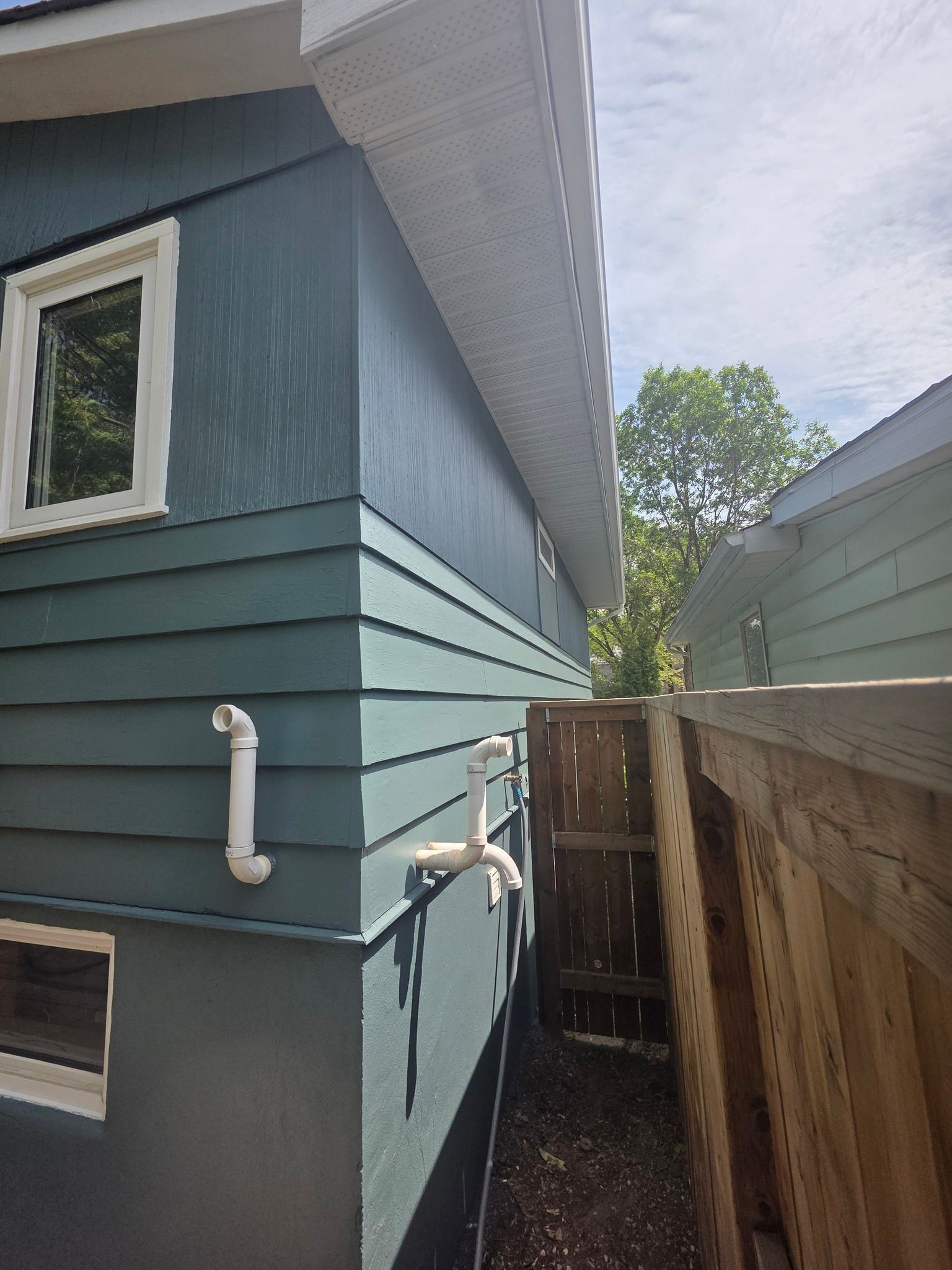Which Exterior Paint Should I Buy?
Choosing the right exterior paint can feel like picking a new outfit for your home—it needs to look great, hold up in all kinds of weather, and fit your personality. But there’s more to it than color swatches. The type of paint you choose impacts how long it lasts, how well it protects, and even how often you’ll need to repaint. Whether you live on the coast, in a rainy region, or under the hot southern sun, different paints serve different needs. Here's what you probably didn’t know about the smartest options on the market.
Weatherproof Exterior Paints Designed for Harsh Climates
Homes in regions with extreme temperature swings need more than just good-looking paint. Weatherproof exterior paints are built to expand and contract without cracking. These formulas resist peeling and keep their grip even through freezing winters and scorching summers. In desert heat or mountain chill, this type of paint keeps your home sealed and sharp-looking. What makes these stand out is their ability to bond tightly to surfaces while flexing with the weather. That means fewer repainting projects and longer-lasting protection.
Another major benefit? Weatherproof paints often come with built-in UV blockers that reduce color fading. If your house faces long hours of direct sunlight or heavy snow, these paints can help your siding stand the test of time. These products also tend to include added resistance to moisture intrusion, which helps prevent internal damage from ice dams or water seepage. Choosing the right formula for your climate zone can mean the difference between repainting every five years or every fifteen.
Durable Latex Paint Choices That Resist Fading and Cracking
Latex paint is one of the most common picks for home exteriors—and for good reason. It’s water-based, which makes it easier to clean up and less harmful during application. But not all latex paints are created equal. Higher-end options are engineered to resist fading, cracking, and chalking, even after years of UV exposure. This makes them a reliable choice for homeowners who want solid color retention and low maintenance. Plus, latex dries quickly and adheres well to surfaces like stucco, wood, or fiber cement.
Durable latex formulas also tend to resist dirt and mildew, keeping your home looking fresh between washes. Their flexibility helps them handle minor movements in the house’s structure without breaking their seal. If your home is older or made of wood that expands and contracts over the seasons, latex can adjust without flaking off. It’s also breathable, which lets trapped moisture escape instead of blistering underneath. A solid latex exterior paint can offer years of beauty and protection in one neat package.
Acrylic Paint Options Offering Superior Adhesion and Longevity
Acrylic paint stands out for its strong adhesion. That means it clings tightly to surfaces and resists peeling over time. It's especially effective on surfaces that are prone to movement or moisture, like exterior trim or hardboard siding. Acrylic paint penetrates the surface just enough to hold on even when weather tries to push it off. Many painters trust acrylics when they want paint that won’t lift or bubble, especially in challenging conditions.
In terms of longevity, acrylic paint delivers some of the most impressive numbers. It holds its color longer than standard latex and resists the elements without frequent touch-ups. You’ll also find that acrylic paints are more resistant to mildew and mold growth, especially when paired with a good primer. Whether you're painting a modern vinyl-clad home or restoring an old craftsman, a high-grade acrylic exterior paint can keep the finish looking new for many years.
Eco-Friendly Exterior Paints for Sustainable Homeowners
Eco-conscious homeowners often assume they'll have to sacrifice performance for environmental responsibility—but that’s no longer true. Many eco-friendly exterior paints are now as durable and vibrant as traditional formulas. These paints are made with low or zero VOCs, which means fewer chemicals in the air during and after application. This is especially important if you have children, pets, or sensitive lungs in the house. Today’s green paints can handle the elements without harming the planet.
In addition to being safer, these sustainable paints often come with natural mildew resistance and better breathability. This means they can help reduce moisture buildup on your siding while also keeping your indoor air cleaner. They're also manufactured using processes that limit environmental impact, from water conservation to recyclable packaging. Choosing an eco-friendly paint is more than a feel-good decision—it’s a smart one for health, performance, and the long haul.
Specialized Exterior Paints Ideal for Coastal Conditions
Living near the coast has its perks—salty breezes, ocean views—but it also comes with challenges for your home's exterior. Salt air corrodes surfaces and speeds up paint breakdown, especially on wood and metal. That’s where specialized coastal paints come in. These paints are designed to handle high humidity, salty moisture, and sand-blown winds without blistering or bubbling. They're formulated to resist rust and offer better protection against moisture damage.
Coastal paints often contain added layers of resin or acrylic that seal out salt intrusion. They also have improved UV resistance to stand up against the blazing sun often found in seaside areas. If you’re painting a home near the beach or even within a few miles of saltwater, regular paint just won’t cut it. Using the wrong type could lead to premature cracking, peeling, and frequent touch-ups. Coastal formulas help preserve your home's appearance longer, with fewer headaches.
Premium Elastomeric Paints for Optimal Flexibility
Elastomeric paint works differently from standard paints—it forms a thick, rubbery coating that bridges hairline cracks and seals surfaces. It’s great for stucco, masonry, and concrete because it prevents water from seeping in while letting vapor escape. Think of it like a waterproof jacket that still breathes. If your home’s exterior is prone to small cracks or has shifting surfaces, this paint helps prevent more damage while looking polished.
What makes elastomeric paint a premium option is its long-term flexibility. It stretches and contracts without breaking its bond to the surface, which means fewer touch-ups over the years. Many of these paints also offer superior dirt and mildew resistance, so your home stays cleaner for longer. If you're dealing with hairline fractures or harsh sun exposure, this paint provides a strong, protective layer that doubles as an attractive finish.
Mold-Resistant Formulas Best for Humid and Rainy Regions
In wet or humid regions, mold and mildew are the biggest threats to your home’s exterior. Mold-resistant paints are made with additives that prevent spores from growing, even in consistently damp conditions. These formulas are especially helpful in regions where summer humidity lingers or where rain comes often. You’ll usually find them with a satin or semi-gloss finish, which helps shed water and dirt more easily.
Mold-resistant exterior paints also add an extra layer of protection against rot, especially for wood siding. This helps extend the life of your siding and trim while keeping the home looking fresh and clean. If your house sits near woods, lakes, or shady areas with less sun exposure, investing in a mold-resistant formula can save you the cost of re-siding or major repairs down the line. They're ideal for year-round protection in climates where dampness is just part of life.
Revive Painting can help you find the best exterior paint for your specific needs—whether you're near the coast, battling humid summers, or just want a vibrant finish that lasts. Contact us today and we’ll help you choose the right protection, style, and color that your home deserves.



